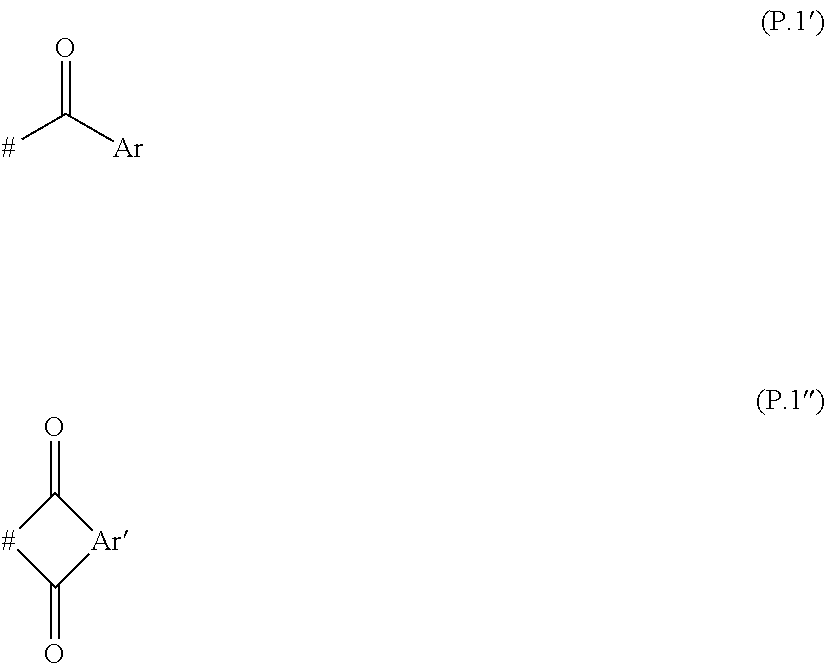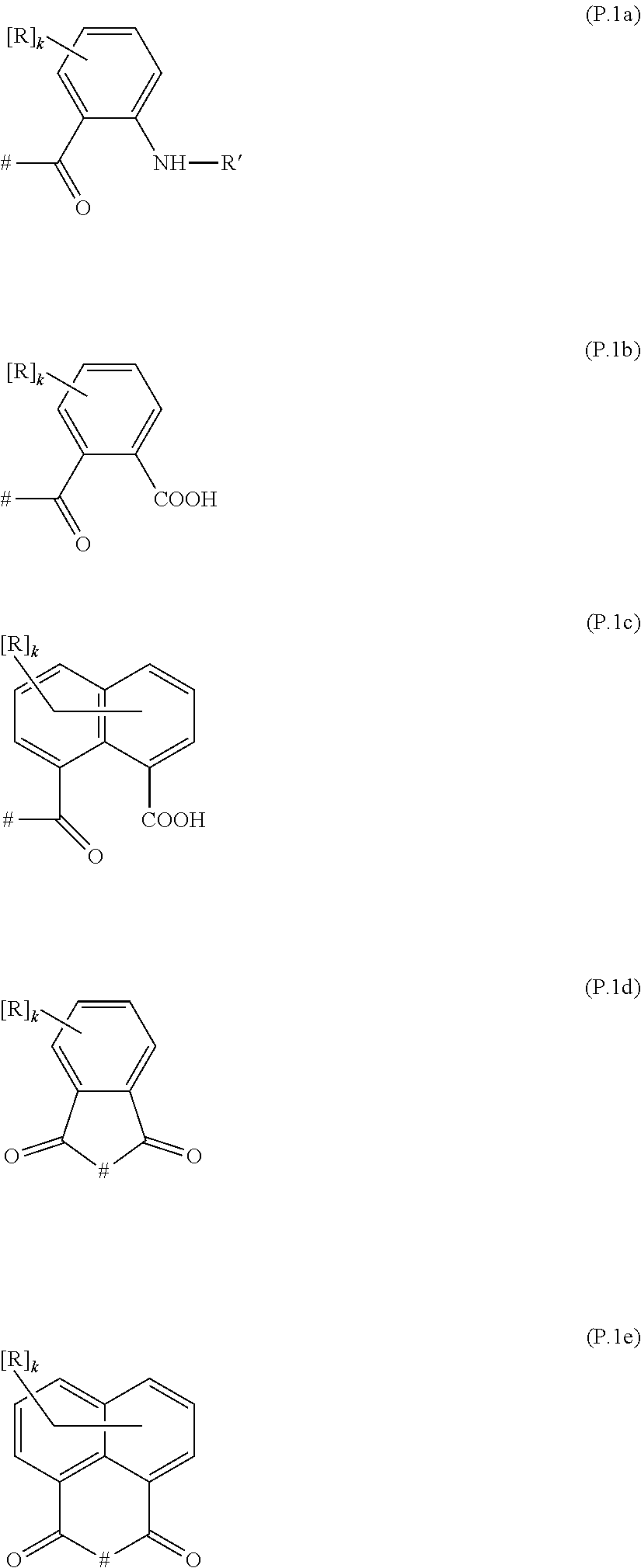Polyalkylene imine based polymers having polyester groups
a technology of polyester group and polyalkylene imine, which is applied in the direction of mixing, transportation and packaging, coating, etc., can solve the problems of unfavorable change of rheological profile, significant increase of viscosity of liquid pigment composition, and yellowing of final resin, so as to achieve the effect of easy incorporation into coating composition
- Summary
- Abstract
- Description
- Claims
- Application Information
AI Technical Summary
Benefits of technology
Problems solved by technology
Method used
Image
Examples
examples
[0223]Starting materials[0224]Polyethyleneimine 1: Branched polyethyleneimine having a Mw of 2000 g / mol (Lupasol® PR8515 of BASF SE, Ludwigshafen, Germany)[0225]Polypropylenimine 1: Branched polypropyleneimine having a Mw of 1700 g / mol (Sigma Aldrich)
[0226]Methods
[0227]Amine Number
[0228]The amine number was determined according to DIN 53176:2002-11.
[0229]Acid Number
[0230]The acid number was determined according to DIN 53402:1990-09.
[0231]Viscosity
[0232]Viscosity was determined by analogy to DIN 53019-1:2008-09, using a Thermo-Haake RheoStress 600 equipment under the CR mode at 22° C. and a shear rate of 1 sec−1 (Spindle CP50).
[0233]Gloss:
[0234]The gloss of the obtained coatings at 20° angle was determined according to DIN 67530 / DIN EN ISO 2813:2012-10 using a commercial reflectometer (Micro-Tri-Gloss reflectometer from BYK Gardner).
[0235]Synthesis
[0236]Dispersant A
[0237](Comparative example according to example 67 of WO 2007 / 110333)
[0238]A mixture of 6.45 g of polyethyleneimine 1, 8...
PUM
| Property | Measurement | Unit |
|---|---|---|
| molar ratio | aaaaa | aaaaa |
| molar ratio | aaaaa | aaaaa |
| temperature | aaaaa | aaaaa |
Abstract
Description
Claims
Application Information
 Login to View More
Login to View More - R&D
- Intellectual Property
- Life Sciences
- Materials
- Tech Scout
- Unparalleled Data Quality
- Higher Quality Content
- 60% Fewer Hallucinations
Browse by: Latest US Patents, China's latest patents, Technical Efficacy Thesaurus, Application Domain, Technology Topic, Popular Technical Reports.
© 2025 PatSnap. All rights reserved.Legal|Privacy policy|Modern Slavery Act Transparency Statement|Sitemap|About US| Contact US: help@patsnap.com



